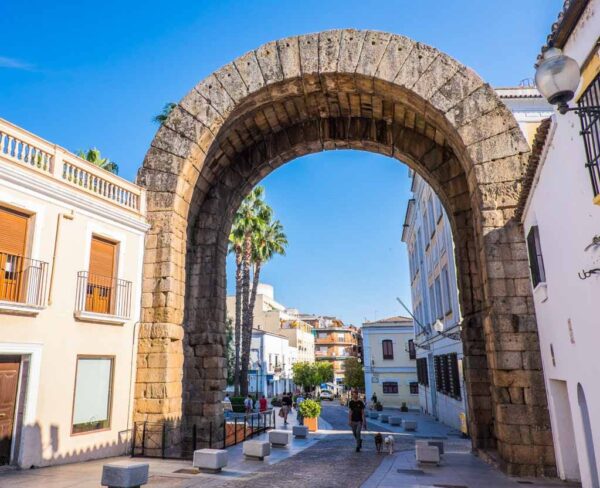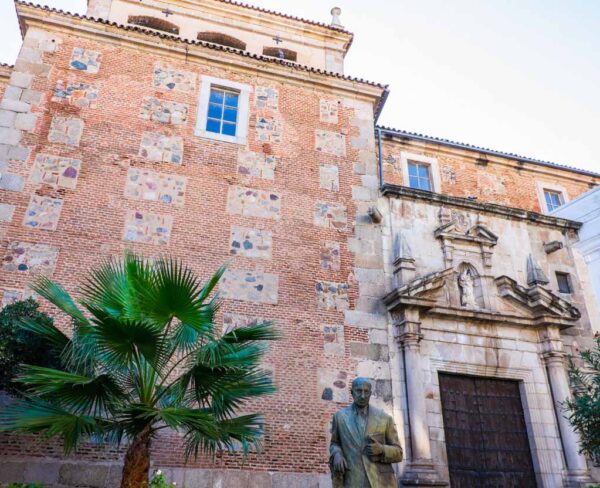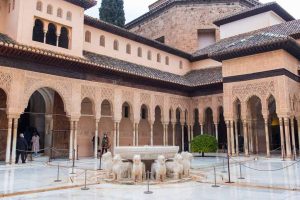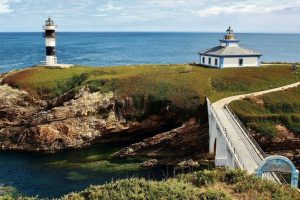Mérida It is a city of Roman origin and houses a true treasure of architecture from that time, and for this reason it is an essential place when organizing a tourism trip through the city. badajoz province or for all Estremadura.
Although it has a long history of more than 2000 years and in its streets there are important Visigothic, Arab and Baroque monuments, almost all of them pale next to the great Roman legacy.
The imperial vestiges are so complete and so well preserved that the Unesco included in 1993 this archaeological site of Mérida on the list of World Heritage.
Part of Roman archaeological remains We will find them when walking through the streets, so it is a pleasant surprise to turn a corner and find the arch of trajan or with the columns of the Temple of Diana.
Other places, however, are in closed areas subject to schedules.
All the information in detail
- 1 How to visit the monuments of Mérida: types of tickets
- 2 Essential places to see and visit in Mérida
- 2.1 Roman theater of Mérida
- 2.2 Roman amphitheater of Mérida
- 2.3 House of the Mérida Amphitheater
- 2.4 Museum of Roman Art of Merida
- 2.5 Portico of the Municipal Forum of Mérida
- 2.6 Temple of Diana in Mérida
- 2.7 Trajan's Arch in Mérida
- 2.8 Museum of Visigothic Art of Mérida
- 2.9 Roman aqueduct of Los Milagros in Mérida
- 2.10 Roman bridge over the Albarregas in Mérida
- 2.11 Roman bridge over the Guadiana in Mérida
- 2.12 Arab citadel in Mérida
- 2.13 Plaza de España in Merida
How to visit the monuments of Mérida: types of tickets
In order to visit these archaeological sites, you have an offer with different types of tickets, so in advance of your visit, you should know which one you are interested in buying.
Of course, I can tell you that to carefully visit all the good things it has Mérida, you're going to need several days.
Essential places to see and visit in Mérida
That is why we have selected some of the essential places that you should not miss in a first visit to the capital of Extremadura, although there are many other important sites in the city itself and its surroundings.
Roman theater of Mérida

El Teatro novel is undoubtedly the Mérida's best-known monument.
To get to know him, the ideal would be to attend a performance during the International Classical Theater Festival or any other show that is organized there.
This way you could perfectly imagine what the atmosphere of the theater would be like at its peak, about 2.000 years ago, when it could accommodate about 6.000 spectators.

It was built around the year 15 BC, when the city was declared the capital of the province of Lusitania.
The place was chosen to take advantage of the slope of a hill, something very common and which made the construction of stands for spectators much easier.
Next to the theater is the call Theater House, in addition to other spaces such as altars and the remains of a roman road.
Roman amphitheater of Mérida

Next to the theater you can visit the Roman amphitheater, another of the great public buildings of Augusta Emeritus.
It was also built about 2000 years ago and was the place where the gladiator fights., although fights were also organized between animals and between men and animals.
The shows took place in the arena, in an elliptical shape, and it had two areas of stands, one for the authorities and the other for those who financed the shows.
Part of the structure disappeared over time because it was used as building material, and most of the amphitheater remained buried and forgotten for many centuries.
House of the Mérida Amphitheater

Known as Amphitheater House Because it is very close to it, it is actually a complex where you can find remains of the wall, a section of the aqueduct, a mausoleum and two large homes.
The most spectacular thing about this place are the houses, especially for their abundant mosaics.
A walkway allows you to pass through them and walk over the remains of rooms, corridors and patios.
ORGANIZE your TRIP
- Don't forget your TRAVEL INSURANCE with a 5% discount
- Book the HOTEL for your trip
- RENT a CAR for your trip
- The best TOURS and EXCURSIONS in Spanish
- NO-LINE TICKETS for museums and monuments
- Best FREE TOURS around the world
- Book your TRANSFER from the airport
- eSIM card with INTERNET at the best price
El mosaic dedicated to vintage It is the one that will catch your attention the most.
Museum of Roman Art of Merida

El National Museum of Roman Art It is one of the great museum spaces dedicated to history in all of Spain.
The building, which marked the international consecration of the architect Rafael Moneo, is inspired by large imperial structures such as baths or mausoleums.
Inside you can admire one of the best collections of mosaics and sculptures of the entire Peninsula.
A tour allows you to glimpse how society worked at the time, especially in a large and powerful city that was the capital of an immense province.
You should not miss a visit to the crypt, full of vestiges of homes and burials.
Portico of the Municipal Forum of Mérida

In the place occupied by Municipal Forum what you see today is the corner of a monumental portico.
As many monumental buildings of Roman Mérida, was covered in marble and must have had a majestic appearance. This coating is observed in some points.
Now it stands out for its great corinthian columns and some walls where there were niches with statues of gods and members of the imperial family
El Augusta Forum Emerita It was built inspired by the great Forum of Augustus of Rome.
Temple of Diana in Mérida

Although it is known by this name, It was never a temple dedicated to Diana.
In reality it was a sanctuary dedicated to the memory of Augusto, the first emperor, and by extension, his entire family.
Finding it suddenly when walking through the streets of the center is one of the most special moments of a walk through this city.
At night it lights up and creates a very special atmosphere.
El Temple of Diana in Mérida It has reached our times in a very good state of conservation thanks to the fact that it was reused over time.
For example, it was used as a foundation to build within it the Renaissance palace of the Corbos, Popularly known as House of Miracles.
The union of both constructions, one inside the other, forms one of the most suggestive sets of all Mérida.
Trajan's Arch in Mérida
As with the Temple of Diana, the name of arch of trajan It has a popular origin that does not respond to historical criteria.

It is located on what was the Maximum Thistle, the main road that crossed the city in a north-south direction.
Don't forget your Travel Insurance
Are you organizing your trip or getaway? Don't leave without take out your travel insurance before, and here we explain why. If you hire it with us, you have a 5% discount
Through the arch they communicated Municipal Forum with the Provincial Forum, which would be located in the area of the current Constitution Plaza, where we now find the Parador de Turismo.

The arch is integrated with the surrounding buildings; If you enter the restaurant next door you will see that one of the walls of this building is the vertical facing of the arch.
Through the arch there would also be access to a temple dedicated to the imperial cult, the remains of which are partly visible a short distance away.
Museum of Visigothic Art of Mérida
During the Visigothic period, Mérida It was one of the most important cities on the Peninsula.
The best place to observe the traces of this period is the Museum of Visigothic Art and Culture, which reviews the city between the 4th and 8th centuries.
It is said to preserve the best examples of Visigothic sculpture from all over Spain.
It is in the convento of Santa Clara, a baroque building from the 17th century, and thus the complex allows us to appreciate other important stages in the historical development of Emeritus, beyond the Roman period.
Roman aqueduct of Los Milagros in Mérida

El Roman aqueduct of Los Milagros supplied water to the Roman city, bringing what accumulated in the Proserpina reservoir.
Much of the conduction was underground, except for the section that we see now that served to bridge the Albarregas River Valley.
This Roman aqueduct It is built with a mixture of granite and brick, which gives it a very different look from the Aqueduct of Segovia.
However, so slender and in the middle of a green area, we can say that it is one of the most beautiful we know.
Roman bridge over the Albarregas in Mérida

Very close to Los Milagros Aqueduct appears Roman bridge that crosses the Albarregas River.
Mérida It is located right at the confluence of the Albarregas with the Guadiana.
Although much less imposing than the great Trajan's bridge, was very important since the Vía de la Plata who was heading to Astorga.
It measures 145 meters and is built with granite. The highlight are the four arches.
Book your hotel, 15% discount, free cancellation
When planning your trip, we advise you to, well in advance, Book your hotel now on booking.com where you can find discounts from 15% and you will have a possible cancellation for free
Roman bridge over the Guadiana in Mérida

In turn, the bridge over the Guadiana it is an impressive Roman engineering work.
Although it has undergone some changes and renovations over the centuries, it remains impressive for its solidity and large dimensions as it measures almost 800 meters long.
It is made up of 60 arches and is made with a concrete core covered by large padded ashlars.
For some years now it has been reserved for pedestrian crossings.
Arab citadel in Mérida

La Arab citadel of Mérida It is located on a small height dominating the Guadiana, right next to the Roman bridge.
He rose by order of Abderraman II and is one of the oldest on the Peninsula.
For its construction, what was at hand was used, the materials from the Roman city, which meant the destruction of the wall.
It is a large fortification whose primary objective was to protect the bridge and access to the city.
Inside, the most notable building is the cistern, for which Roman and Visigoth construction materials were used.
Plaza de España in Merida

La Plaza of Spain It is the heart of modern life in the center of the city of Mérida, a place that comes especially alive at dusk.
Reserve your RENTAL CAR now for your trip
Looking ahead to your trip, book your rental car now on this website that offers you the best price guaranteed and allows you a possible free cancellation in most cases. Here you have more information with tips for renting a car
The bars and restaurants in the Plaza de España have excellent gastronomic offer, which feels very good after a few hours of cultural visits.
In the square there are also buildings of interest, such as the Co-Cathedral of Santa Maria, Vera palace and City Hall of Merida.

















Thank you for such a good explanation, I will go at the beginning of August, thank you.
Happy summer
I would like to visit Merida in 3 days, transportation from Zaragoza, accommodation, entrance to places of interest. Thank you
Thank you for this very complete article. Mérida is a city with a rich Roman history and is home to some of the best archaeological remains in the world.
Very interesting for our next trip